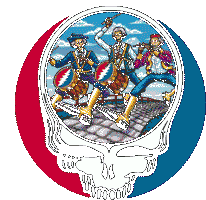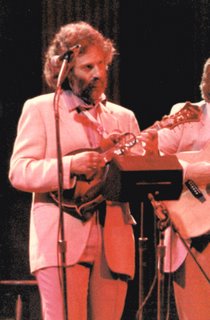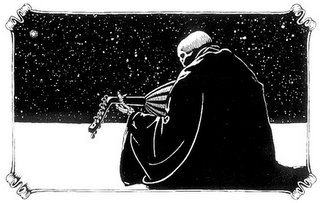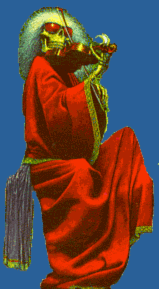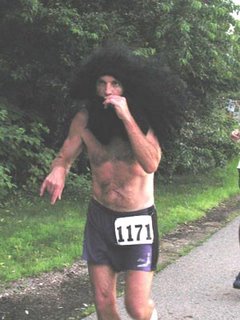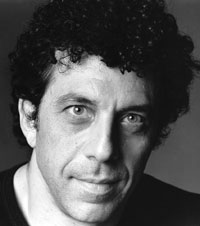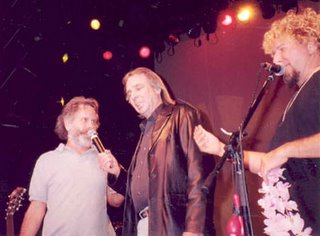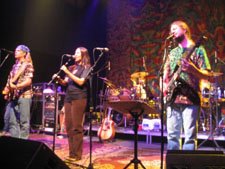Rock and Roll Dreams Come True at the 2006 Rock and Roll Fantasy Camp™

From eCoustics:
Rock and Roll Dreams Come True at the 2006 Rock and Roll Fantasy Camp™, Presented by JBL
All-Star Roster of Participants Includes Roger Daltrey (The Who), All the Members of Cheap Trick, Mickey Hart (Grateful Dead), Neal Schon (Journey) and Many More -
WOODBURY, NY - Everybody's a star at the Rock and Roll Fantasy Camp, where rock and roll dreams come true for fans who want to make their musical fantasies become reality. Presented by JBL, the leading manufacturer of professional and consumer loudspeakers, and produced by David Fishof Presents, the 2006 Rock and Roll Fantasy Camp will be the biggest and best ever. For 2006, a remarkable lineup of all-star rock legends - including Roger Daltrey (The Who), all the members of Cheap Trick (Rick Nielsen, Robin Zander, Tom Petersson and Bun E. Carlos), Mickey Hart (Grateful Dead), Dickey Betts (The Allman Brothers, Dickey Betts and Great Southern), Neal Schon (Journey), Mickey Thomas (Starship), and many more -- will be participating.
The camp will take place in Los Angeles, CA, from February 16 - 20, 2006. Over the course of five days and nights, participants will have the opportunity to learn from, practice, jam and hang out with some of the world's greatest rock musicians and songwriters. They'll be able to live their rock dreams, up-close-and-personal with the stars. No experience is necessary, and all musical levels are welcome.
Attendees will receive daily small-group instruction from the celebrity musician camp band, led by Camp Director Jack Blades (Night Ranger) and featuring Teddy Zig Zag Andreadis (Guns N' Roses, Alice Cooper), Gary Burr (Carole King), Mark Farner (Grand Funk Railroad), Doug Fieger (The Knack), Sandy Gennaro (The Monkees, Joan Jett, Cyndi Lauper), Kelly Keagy (Night Ranger), Simon Kirke (Bad Company), Bruce Kulick (Kiss), Michael Lardie (Great White), Jerry Renino (The Monkees), Mark Slaughter (Slaughter) and Kip Winger (Winger).
Paul Bente, president of JBL Consumer Products, noted: “JBL is extremely proud to present the 2006 Rock and Roll Fantasy Camp. JBL and rock and roll have always gone together. More professional musicians, recording engineers and touring sound companies rely on JBL loudspeakers than any other brand to convey music the way it was meant to be heard - with extraordinary clarity, power and realism, in concert halls, in the recording studio, and for listeners at home and in the car.”
Bente continued, “We would like to thank all the additional sponsors and the artists for supporting the 2006 Rock and Roll Fantasy Camp, which will offer participants a unique opportunity to experience all the musical intensity and excitement of rock and roll. It should be an unforgettable experience for everyone!”
Enthusiasts who sign up for the Rock and Roll Fantasy Camp will participate in jam sessions and play songs with the celebrity musicians at a world-class professional recording studio and rehearsal space. Campers may attend seminars with musicians and top music industry executives, have meals and socialize with the stars, and participate in a Battle of the Bands. For five intense days and nights, participants will enjoy the recording, touring and fantasy life of a rock legend - all leading up to playing live onstage with their idols in a special performance at the House of Blues on the Sunset Strip in Los Angeles.
Along with presenting the 2006 Rock and Roll Fantasy Camp, JBL will be giving away $50,000 worth of prizes. In addition, Gibson Guitar, the world's leading manufacturer of musical instruments, will bring to the camp its collection of world-class Gibson and Epiphone guitars and basses, which may be used by the campers, giving them the chance to play the instruments used by the stars. The guitars will be signed by the artists and auctioned for charity.
Adding to the excitement, The Learning Channel (TLC®) will air a two-hour TV special about the 2006 Rock and Roll Fantasy Camp on February 22, 2006, from 8:00 p.m. to 10:00 p.m. (Eastern time). Hosted by Evan Farmer of The Learning Channel's hit TV show “While You Were Out,” the special will follow the stories of selected campers as they live out the thrill of a lifetime.
Additional sponsors of the Rock and Roll Fantasy Camp include VH1 Classic™, the classic-rock TV network; CMP Entertainment Media, Inc. (publishers of Guitar Player®, Keyboard Magazine®, Bass Player® and EQ™ magazines); DW® (Drum Workshop, Inc.); Empire Kosher® Poultry Inc.; KORG®; VOX®; Marshall® Amplification plc; Modern Drummer® magazine; Musician's Friend; Pro-Mark® Drumsticks; The Wall Street Journal; and The Avedis Zildjian® Company.
The Harman Consumer Group (HCG) is a leading designer, manufacturer and marketer of a wide range of high-fidelity loudspeakers, audio and video components, and multimedia systems for use in homes and automobiles, and with computers. The group's brands include JBL, Infinity, Harman Kardon, Mark Levinson, Revel, Audioaccess and Lexicon.
HCG is a division of Harman International Industries, Incorporated. Harman International (http://www.harman.com/) is a leading manufacturer of high-quality, high-fidelity audio products and electronic systems for the automotive, consumer and professional markets. The company's stock is traded on the New York Stock Exchange under the symbol “HAR.”
# # # For additional information, contact: Frank Doris FM Group Public Relations 631-385-1304 ext. 402 frank.doris@fm-group.net
JBL and Harman International are registered trademarks of Harman International Industries, Incorporated. Rock and Roll Fantasy Camp is a trademark of Rock and Roll Fantasy Camp, Inc. VH-1 Classic is a trademark of MTV Networks. Gibson and Epiphone are registered trademarks of Gibson Guitar Corp. Guitar Player, Keyboard Magazine, Bass Player and EQ are registered trademarks of CMP Entertainment Media Inc. DW is a registered trademark of Drum Workshop, Inc. Empire Kosher is a registered trademark of Empire Kosher Poultry Inc. KORG is a registered trademark of KORG Inc. VOX is a registered trademark of VOX Amplification Ltd. Marshall is a registered trademark of Marshall Amplification plc. Modern Drummer is a registered trademark of Modern Drummer Publications, Inc. Pro-Mark is a registered trademark of Pro-Mark Corporation. Zildjian is a registered trademark of The Avedis Zildjian Company. TLC is a registered trademark of Discovery Communications Inc
